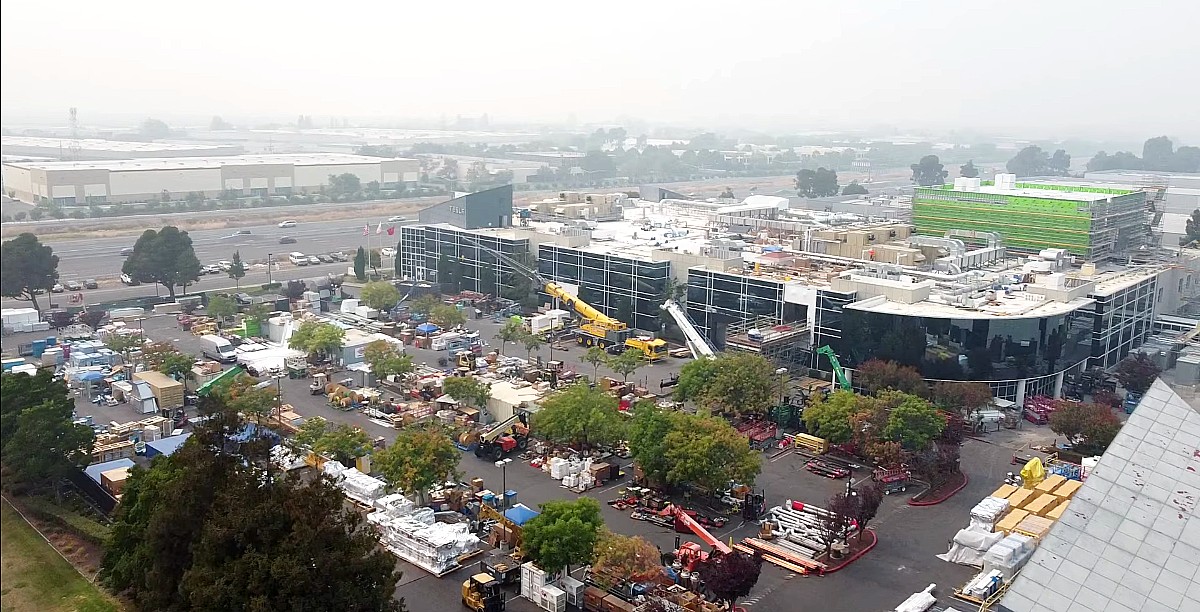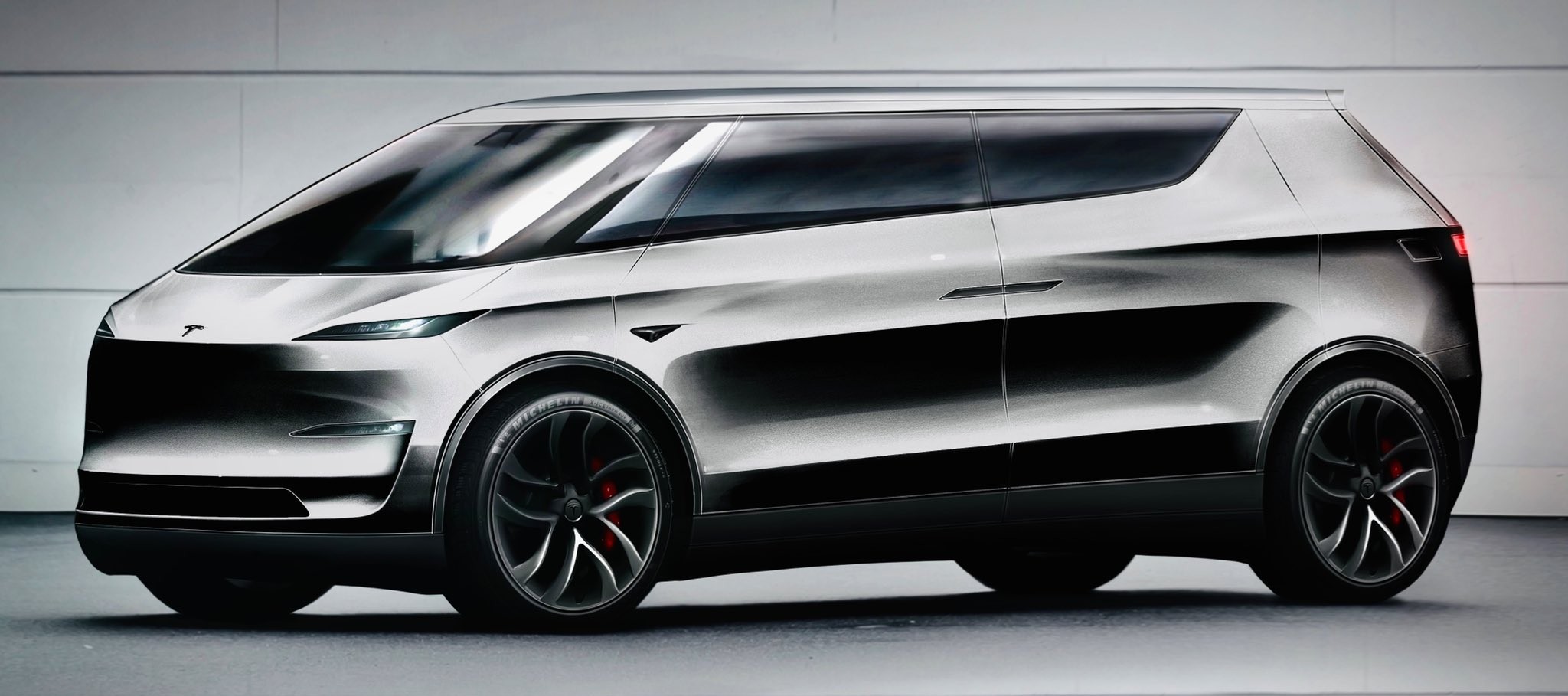

News
Tesla’s ‘Roadrunner’ facility gets a neighbor working on tech beyond the million-mile battery
As the wait for Tesla’s Battery Day continues, more and more speculations are abounding about what the electric car maker might reveal during the highly-anticipated event. Elon Musk has stated that Battery Day’s announcements will be mind-blowing, and based on apparent clues recently observed by the Tesla community, it appears that the CEO may be right on the money.
Recent reports have indicated that Amprius, a battery company currently working on silicon nanowire tech, recently relocated its headquarters to a site that’s just a few hundred feet away from Tesla’s Roadrunner battery facility in Kato Road, Fremont. Considering the firm’s focus, its new headquarters’ rather convenient location, and Elon Musk’s previous references to the use of silicon in batteries, there seems to be a fair chance that Amprius’ move to Fremont may be more than a coincidence.
Amprius notes that it is working on creating silicon nanowires for battery anodes that dramatically improve battery weight and density. The company’s website notes that silicon generally has about 10x the capacity of graphite (carbon), but it has a big drawback in the way that it swells when it’s charged, causing the silicon to fracture. To address this, Amprius utilizes silicon nanowires, which keeps the silicon from fracturing and breaking apart even when it swells.
As noted by EV enthusiast and YouTube host Driving Delta, Elon Musk himself appears to be teasing the use of advanced silicon tech on Twitter last month. In one of his posts, Musk shared some lyrics of the song “Lithium” by Nirvana, whose refrain includes sections that state “I’m not gonna crack.” Granted, Musk may simply be trolling the Tesla community with his posts, but it should be noted that he also talked about the increasing use of silicon anodes five years ago.
“We’re shifting the cell chemistry for the upgrade battery pack to partially use silicon in the anode. This is just a sort of baby step in the direction of using silicon in the anode. We’re still primarily using synthetic graphite, but over time, we’ll be using increasing amounts of silicon in the anode,” Musk noted during a 2015 conference call.
As noted by Amprius’ on its website, the use of 100% silicon paves the way for batteries with the highest energy density, perhaps even at the 500 Wh/kg level. That’s enough to start exploring electric VTOL projects, a topic that Elon Musk has admitted is something that truly interests him. That being said, Professor in Energy Materials and Technologies Ying Shirley Meng, who has made significant contributions to Maxwell Technologies’ battery tech herself, believes that challenges still remain in the use of silicon nanowires.
“We should pay attention to the cost per kg. Even (if) those nanowires work (which I doubt), to produce consistent quality in metric ton scale at 10$ per kg it will be sci-fi for now,” she noted.
Elon Musk, for his part, recently stated that the technology that could allow 400 Wh/kg with a high life cycle and volume production is not too far away. Musk gave a rough timeframe for the technology, stating that such milestones could be achieved in about three to four years.
Tesla’s Battery Day event is expected to introduce the company’s next-generation lithium-ion cells, though speculations suggest that these batteries — which are expected to last a million miles — are based largely on Maxwell Technologies’ dry electrode tech. Maxwell itself has previously noted that it could offer batteries with 300 Wh/kg while stating that it had also identified a path to 500 Wh/kg. With this in mind, it appears that Tesla may already be setting the stage for cells that will likely go even beyond the million-mile battery.
Granted, Amprius’ move to Fremont may be unconnected to Tesla. That being said, the two companies’ goals to align with each other, and Elon Musk’s own references to the use of silicon suggests that Tesla will likely get a lot of value from Amprius’ tech. If speculations prove true, the path to batteries that go even further than the million-mile mark may be feasible in the near future. Such innovations are key to Tesla’s goal of accelerating the transition to sustainable energy, after all.
Watch these recent takes on the Amprius rumors in the videos below.
Elon Musk
Tesla Supercharger Diner food menu gets a sneak peek as construction closes out
What are you ordering at the Tesla Diner?

The Tesla Supercharger Diner in Los Angeles is nearing completion as construction appears to be winding down significantly. However, the more minor details, such as what the company will serve at its 50s-style diner for food, are starting to be revealed.
Tesla’s Supercharger Diner is set to open soon, seven years after CEO Elon Musk first drafted the idea in a post on X in 2018. Musk has largely come through on most of what he envisioned for the project: the diner, the massive movie screens, and the intended vibe are all present, thanks to the aerial and ground footage shared on social media.
We already know the Diner will be open 24/7, based on decals placed on the front door of the restaurant that were shared earlier this week. We assume that Tesla Optimus will come into play for these long and uninterrupted hours.
The Tesla Diner is basically finished—here’s what it looks like
As far as the food, Tesla does have an email also printed on the front door of the Diner, but we did not receive any response back (yet) about what cuisine it will be offering. We figured it would be nothing fancy and it would be typical diner staples: burgers, fries, wings, milkshakes, etc.
According to pictures taken by @Tesla_lighting_, which were shared by Not a Tesla App, the food will be just that: quick and affordable meals that diners do well. It’s nothing crazy, just typical staples you’d find at any diner, just with a Tesla twist:
Tesla Diner food:
• Burgers
• Fries
• Chicken Wings
• Hot Dogs
• Hand-spun milkshakes
• And more https://t.co/kzFf20YZQq pic.twitter.com/aRv02TzouY— Sawyer Merritt (@SawyerMerritt) July 17, 2025
As the food menu is finalized, we will be sure to share any details Tesla provides, including a full list of what will be served and its prices.
Additionally, the entire property appears to be nearing its final construction stages, and it seems it may even be nearing completion. The movie screens are already up and showing videos of things like SpaceX launches.
There are many cars already using the Superchargers at the restaurant, and employees inside the facility look to be putting the finishing touches on the interior.
🚨 Boots on the ground at the Tesla Diner:
— TESLARATI (@Teslarati) July 17, 2025
It’s almost reminiscent of a Tesla version of a Buc-ee’s, a southern staple convenience store that offers much more than a traditional gas station. Of course, Tesla’s version is futuristic and more catered to the company’s image, but the idea is the same.
It’s a one-stop shop for anything you’d need to recharge as a Tesla owner. Los Angeles building permits have not yet revealed the date for the restaurant’s initial operation, but Tesla may have its eye on a target date that will likely be announced during next week’s Earnings Call.
News
Tesla’s longer Model Y did not scale back requests for this vehicle type from fans
Tesla fans are happy with the new Model Y, but they’re still vocal about the need for something else.

Tesla launched a slightly longer version of the Model Y all-electric crossover in China, and with it being extremely likely that the vehicle will make its way to other markets, including the United States, fans are still looking for something more.
The new Model Y L in China boasts a slightly larger wheelbase than its original version, giving slightly more interior room with a sixth seat, thanks to a third row.
Tesla exec hints at useful and potentially killer Model Y L feature
Tesla has said throughout the past year that it would focus on developing its affordable, compact models, which were set to begin production in the first half of the year. The company has not indicated whether it met that timeline or not, but many are hoping to see unveilings of those designs potentially during the Q3 earnings call.
However, the modifications to the Model Y, which have not yet been officially announced for any markets outside of China, still don’t seem to be what owners and fans are looking forward to. Instead, they are hoping for something larger.
A few months ago, I reported on the overall consensus within the Tesla community that the company needs a full-size SUV, minivan, or even a cargo van that would be ideal for camping or business use.
Tesla is missing one type of vehicle in its lineup and fans want it fast
That mentality still seems very present amongst fans and owners, who state that a full-size SUV with enough seating for a larger family, more capability in terms of cargo space for camping or business operation, and something to compete with gas cars like the Chevrolet Tahoe, Ford Expedition, or electric ones like the Volkswagen ID.BUZZ.
We asked the question on X, and Tesla fans were nearly unanimously in support of a larger SUV or minivan-type vehicle for the company’s lineup:
🚨 More and more people are *still* saying that, despite this new, longer Model Y, Tesla still needs a true three-row SUV
Do you agree? https://t.co/QmbRDcCE08 pic.twitter.com/p6m5zB4sDZ
— TESLARATI (@Teslarati) July 16, 2025
Here’s what some of the respondents said:
100% agree, we need a larger vehicle.
Our model Y is quickly getting too small for our family of 5 as the kids grow. A slightly longer Y with an extra seat is nice but it’s not enough if you’re looking to take it on road trips/vacations/ kids sports gear etc.
Unfortunately we…
— Anthony Hunter (@_LiarsDice_) July 17, 2025
Had to buy a Kia Carnival Hybrid because Tesla doesn’t have a true 3 row vehicle with proper space and respectable range. pic.twitter.com/pzwFyHU8Gi
— Neil, like the astronaut (@Neileeyo) July 17, 2025
Agreed! I’m not sure who created this but I liked it enough to save it. pic.twitter.com/Sof5nMehjS
— 🦉Wise Words of Wisdom – Inspirational Quotes (IQ) (@WiseWordsIQ) July 16, 2025
Tesla is certainly aware that many of its owners would like the company to develop something larger that competes with the large SUVs on the market.
However, it has not stated that anything like that is in the current plans for future vehicles, as it has made a concerted effort to develop Robotaxi alongside the affordable, compact models that it claims are in development.
It has already unveiled the Robovan, a people-mover that can seat up to 20 passengers in a lounge-like interior.
The Robovan will be completely driverless, so it’s unlikely we will see it before the release of a fully autonomous Full Self-Driving suite from Tesla.
Energy
Tesla launches first Virtual Power Plant in UK – get paid to use solar
Tesla has launched its first-ever Virtual Power Plant program in the United Kingdom.

Tesla has launched its first-ever Virtual Power Plant program in the United Kingdom. This feature enables users of solar panels and energy storage systems to sell their excess energy back to the grid.
Tesla is utilizing Octopus Energy, a British renewable energy company that operates in multiple markets, including the UK, France, Germany, Italy, Spain, Australia, Japan, New Zealand, and the United States, as the provider for the VPP launch in the region.
The company states that those who enroll in the program can earn up to £300 per month.
Tesla has operated several VPP programs worldwide, most notably in California, Texas, Connecticut, and the U.S. territory of Puerto Rico. This is not the first time Tesla has operated a VPP outside the United States, as there are programs in Australia, Japan, and New Zealand.
This is its first in the UK:
Our first VPP in the UK
You can get paid to share your energy – store excess energy in your Powerwall & sell it back to the grid
You’re making £££ and the community is powered by clean energy
Win-win pic.twitter.com/evhMtJpgy1
— Tesla UK (@tesla_uk) July 17, 2025
Tesla is not the only company that is working with Octopus Energy in the UK for the VPP, as it joins SolarEdge, GivEnergy, and Enphase as other companies that utilize the Octopus platform for their project operations.
It has been six years since Tesla launched its first VPP, as it started its first in Australia back in 2019. In 2024, Tesla paid out over $10 million to those participating in the program.
Participating in the VPP program that Tesla offers not only provides enrolled individuals with the opportunity to earn money, but it also contributes to grid stabilization by supporting local energy grids.
-

 Elon Musk1 day ago
Elon Musk1 day agoWaymo responds to Tesla’s Robotaxi expansion in Austin with bold statement
-

 News1 day ago
News1 day agoTesla exec hints at useful and potentially killer Model Y L feature
-

 Elon Musk2 days ago
Elon Musk2 days agoElon Musk reveals SpaceX’s target for Starship’s 10th launch
-

 Elon Musk3 days ago
Elon Musk3 days agoTesla ups Robotaxi fare price to another comical figure with service area expansion
-

 News1 day ago
News1 day agoTesla’s longer Model Y did not scale back requests for this vehicle type from fans
-

 News1 day ago
News1 day ago“Worthy of respect:” Six-seat Model Y L acknowledged by Tesla China’s biggest rivals
-

 News2 days ago
News2 days agoFirst glimpse of Tesla Model Y with six seats and extended wheelbase
-

 Elon Musk2 days ago
Elon Musk2 days agoElon Musk confirms Tesla is already rolling out a new feature for in-car Grok








